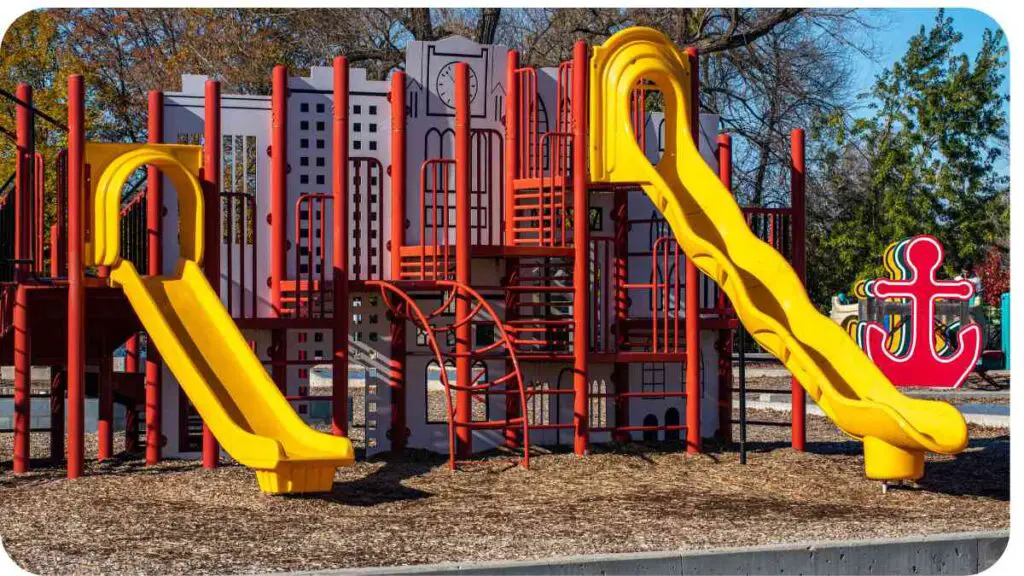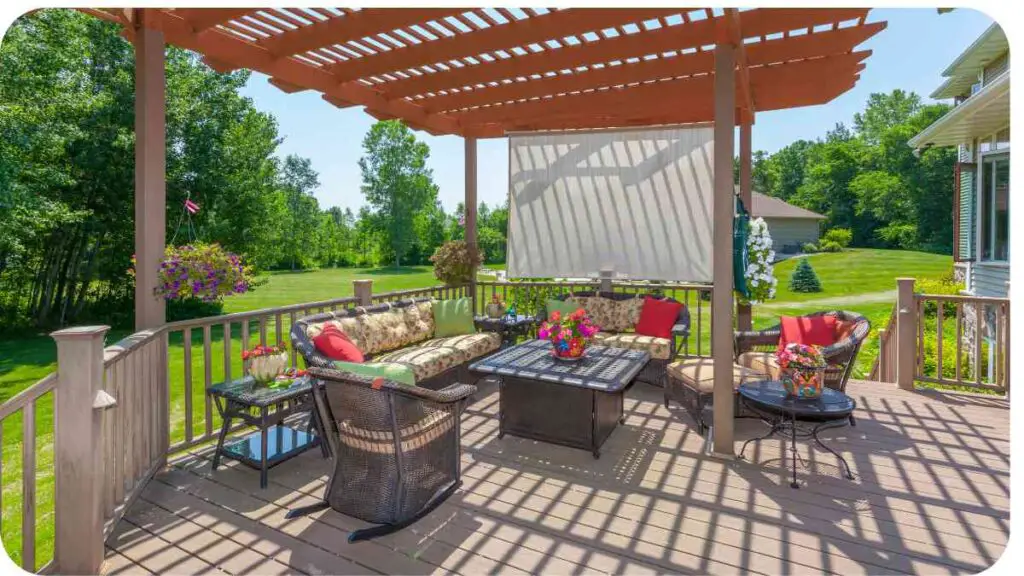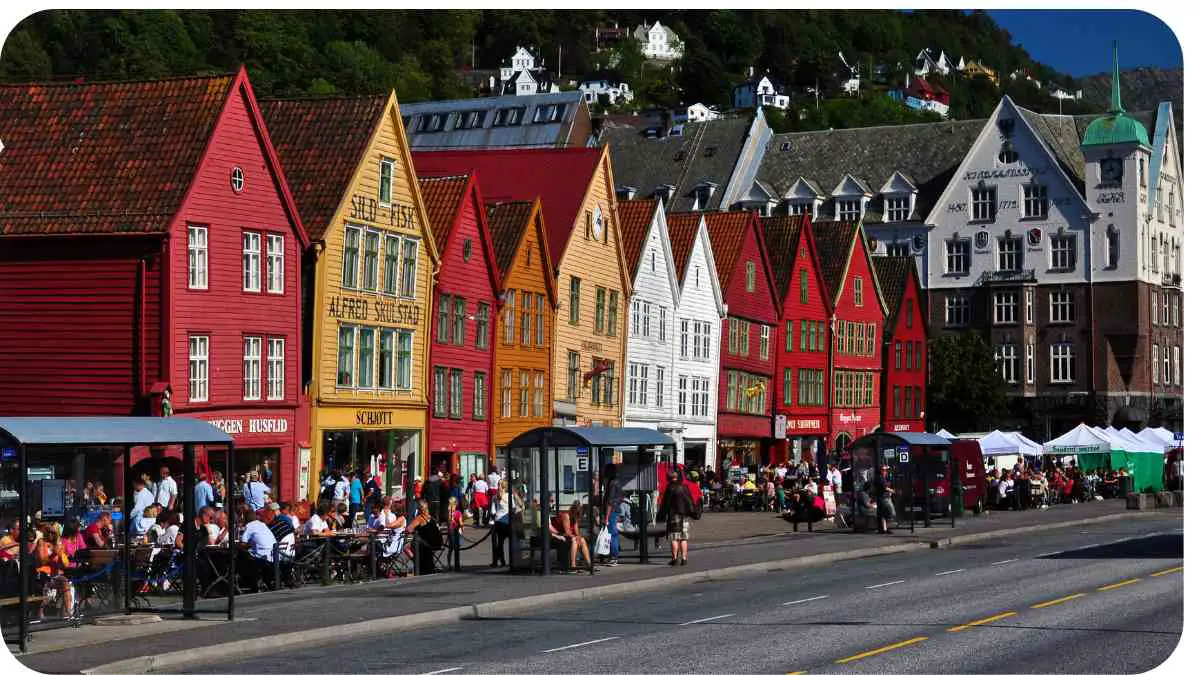Imagine walking into a bustling commercial space where patrons sip coffee under elegant pergolas, or clients gather for meetings in serene outdoor gazebos. Outdoor structures have become more than just functional additions; they’re transformative elements that enhance business environments and elevate customer experiences.
In this comprehensive guide, we’ll explore the myriad benefits of outdoor structures for commercial spaces. Whether you’re looking to expand your restaurant’s seating capacity, create a welcoming outdoor office area, or enhance your retail store’s ambiance, outdoor structures can play a pivotal role in achieving your business goals.
| Key Takeaways |
|---|
| Outdoor structures enhance seating capacity and customer experience. |
| Choose structures based on functionality, aesthetic appeal, and durability. |
| Consider zoning regulations and obtain necessary permits for installation. |
| Regular maintenance ensures longevity and attractiveness of outdoor spaces. |
| Integration of outdoor structures can boost revenue and brand perception. |
Understanding the Need for Outdoor Structures

Benefits of Outdoor Structures
Outdoor structures offer a range of benefits that can significantly impact your business:
| Benefit | Description |
|---|---|
| Increased Seating Capacity | Expand your space without major renovations, accommodating more customers. |
| Enhanced Customer Experience | Create inviting atmospheres that encourage customers to stay longer. |
| Versatile Use | Suitable for dining areas, meeting spots, retail displays, and more. |
| Brand Enhancement | Reflect your brand’s aesthetic and values through well-designed spaces. |
Types of Outdoor Structures
When considering outdoor structures for your commercial space, it’s essential to choose options that align with your business needs and aesthetic preferences. Here are some popular choices:
Revamp your commercial space by transforming your patio into a personal paradise. This enhancement not only elevates the aesthetic appeal but also creates a welcoming environment for clients and employees, boosting overall business satisfaction and productivity.
Gazebos
Gazebos are versatile structures that can serve as focal points in outdoor settings. They typically feature open sides and a roof, providing shelter from the elements while offering an open-air experience. Gazebos are ideal for:
- Outdoor Dining: Enhance your restaurant’s dining experience by offering intimate seating arrangements under a charming gazebo.
- Event Spaces: Host small gatherings, weddings, or corporate events in a picturesque outdoor setting.
Pergolas
Pergolas add elegance and sophistication to any outdoor space. These structures feature open frameworks, often with lattice roofs or slatted designs, providing partial shade and a visually appealing structure. Pergolas are perfect for:
- Outdoor Offices: Create inspiring workspaces where employees can collaborate or have meetings amidst nature.
- Retail Displays: Use pergolas to showcase products or create attractive displays that draw customers into your store.
Outdoor Seating Areas
Creating comfortable outdoor seating areas is crucial for businesses looking to expand their capacity or offer al fresco dining options. Whether it’s simple benches and tables or plush seating under a canopy, outdoor seating areas can:
- Boost Customer Satisfaction: Provide a relaxing environment where customers can enjoy meals or conduct meetings comfortably.
- Increase Revenue: Utilize underutilized outdoor space to accommodate more patrons during peak times.
Elevate your business’s outdoor area by transforming your space with water features. This addition can create a serene and calming atmosphere, making your commercial space more attractive and inviting to visitors.
Table: Features Comparison
| Feature | Gazebos | Pergolas | Outdoor Seating Areas |
|---|---|---|---|
| Structure | Fully enclosed with open sides | Open framework with lattice or slats | Varied structures depending on design |
| Function | Sheltered dining or event space | Partial shade with aesthetic appeal | Comfortable seating arrangements |
| Use Cases | Restaurants, events, small gatherings | Outdoor offices, retail displays | Restaurants, cafes, office spaces |
| Benefits | Enhanced privacy, weather protection | Aesthetic appeal, customizable | Increased seating capacity |
Choosing the Right Outdoor Structure

Selecting the appropriate outdoor structure involves careful consideration of several factors to ensure it aligns with your business goals and enhances your commercial space effectively.
Factors to Consider
When deciding on an outdoor structure, keep these key factors in mind:
- Purpose and Functionality: Define how you plan to use the structure—whether it’s for dining, meetings, events, or retail displays. Each purpose may require different features and designs.
- Aesthetic Compatibility: Ensure the structure complements your brand’s aesthetic and enhances the overall ambiance of your commercial space. Consider materials, colors, and design elements that align with your brand identity.
- Space Availability: Evaluate the available outdoor space and how the structure will fit within it. Consider factors like dimensions, placement, and accessibility for customers and staff.
- Durability and Maintenance: Choose materials that are durable and require minimal upkeep. Outdoor structures should withstand weather conditions and regular use without frequent repairs or replacements.
Achieve a professional and appealing look by designing your dream outdoor living space. Incorporating stylish and functional elements will enhance the overall experience for clients, making your business stand out.
Budget Considerations
Budgeting for outdoor structures involves more than just the initial purchase or installation cost. Consider long-term maintenance, potential renovations to accommodate the structure, and any additional features or amenities you may need.
Table: Budget Allocation Example
| Expense | Estimated Cost Range |
|---|---|
| Structure Purchase/Installation | $5,000 – $20,000 |
| Site Preparation | $1,000 – $5,000 |
| Additional Features | Varies based on need |
| Maintenance Costs | Annual upkeep budget |
Designing Your Outdoor Space

Designing your outdoor space goes beyond selecting a structure it involves creating a functional and visually appealing environment that enhances customer experience and supports business activities.
Functional Layout
Consider how customers and employees will navigate and utilize the outdoor space:
- Traffic Flow: Ensure easy movement between indoor and outdoor areas. Design pathways that guide customers seamlessly through the space.
- Activity Zones: Divide the space into distinct areas for different purposes, such as dining, relaxation, and event hosting. Each zone should be designed to maximize usability and comfort.
Aesthetic Considerations
The visual appeal of your outdoor space plays a significant role in attracting and retaining customers:
- Branding Elements: Incorporate elements that reflect your brand’s identity, such as colors, logos, and themed decor. Create a cohesive look that reinforces brand recognition.
- Natural Elements: Integrate greenery, water features, and natural materials to enhance the ambiance and create a welcoming atmosphere.
Table: Design Elements Checklist
| Design Element | Description |
|---|---|
| Color Scheme | Brand-aligned colors for cohesion |
| Furniture Selection | Comfortable and durable seating options |
| Lighting | Ambient and task lighting for evening usability |
| Decorative Accents | Plants, artworks, or signage that enhance aesthetics |
Installation and Maintenance Tips
Installing and maintaining outdoor structures requires careful planning and regular upkeep to ensure they remain functional and appealing over time.
Create an inviting and relaxing environment for your business by creating a tranquil backyard retreat. This transformation can significantly improve client impressions and employee well-being, leading to a more positive business atmosphere.
Installation Process
- Site Preparation: Clear the area of debris and level the ground as needed. Ensure proper drainage to prevent water pooling around the structure.
- Foundation: Depending on the structure type, install a stable foundation to support its weight and withstand weather conditions.
- Assembly: Follow manufacturer instructions or hire professionals for assembly to ensure structural integrity and safety.
Maintenance Guidelines
Regular maintenance prolongs the lifespan and appearance of outdoor structures:
- Cleaning: Regularly clean surfaces to remove dirt, debris, and mildew. Use appropriate cleaning agents based on the material (e.g., soap and water for wood, mild cleaners for metal).
- Inspections: Periodically inspect for signs of wear, loose fastenings, or damage. Address issues promptly to prevent further deterioration.
Table: Maintenance Schedule
| Maintenance Task | Frequency |
|---|---|
| Cleaning | Weekly |
| Inspections | Monthly |
| Repairs | As needed |
| Seasonal Maintenance | Spring and Fall |
Real-World Examples and Success Stories
Learning from real-world examples can provide valuable insights into how outdoor structures can positively impact commercial spaces.
Case Study: Company A’s Outdoor Expansion
Company A, a bustling cafe in downtown, faced challenges with limited indoor seating and high demand during peak hours. By strategically installing outdoor gazebos and pergolas, they were able to:
- Increase Seating Capacity: Accommodate more customers without expanding their indoor space.
- Enhance Customer Experience: Provide a cozy and inviting atmosphere for dining and socializing.
- Boost Revenue: Attract more patrons, especially during favorable weather conditions.
Expert Insights from Architect B
Architect B, known for innovative commercial designs, emphasizes the importance of thoughtful outdoor space planning:
- Integration with Surroundings: “Outdoor structures should harmonize with the natural and built environment. Consider how sunlight, wind, and views can enhance the user experience.”
- Functional Design: “Design outdoor areas that serve multiple purposes. For example, a pergola can double as a shaded seating area and a decorative focal point.”
Table: Expert Tips for Design
| Expert Tip | Description |
|---|---|
| Harmonize with Environment | Blend structures seamlessly with surroundings for a cohesive look |
| Multi-functional Spaces | Design structures that serve dual purposes for versatility |
| Sustainable Materials | Opt for eco-friendly materials that minimize environmental impact |
These insights highlight the strategic use of outdoor structures to improve functionality, aesthetics, and customer satisfaction in commercial settings.
For businesses in urban areas, creating low-maintenance gardens for busy urbanites can be a game-changer. These gardens require minimal upkeep while providing a green, refreshing space that enhances the overall appeal of your commercial property.
Frequently Asked Questions (FAQs)
Here are some common questions businesses may have about incorporating outdoor structures into their commercial spaces:
What are the zoning regulations for outdoor structures?
Zoning regulations vary by location and may dictate where and how outdoor structures can be installed. It’s essential to check local ordinances and obtain necessary permits before proceeding with installation. Factors such as height restrictions, setback requirements, and noise considerations may impact your plans.
Table: FAQ Answers
| FAQ Question | Answer |
|---|---|
| What are the zoning regulations for outdoor structures? | Regulations vary by location; check local ordinances and obtain permits |
| How can outdoor structures enhance customer experience? | They provide additional seating, create ambiance, and expand usable space |
How can outdoor structures enhance customer experience?
Outdoor structures contribute to a positive customer experience in several ways:
- Expanded Seating Options: Increase capacity and accommodate more patrons.
- Enhanced Ambiance: Create inviting outdoor environments that encourage customers to stay longer.
- Functional Benefits: Provide shelter from sun or rain, making outdoor areas usable in various weather conditions.
By strategically integrating outdoor structures, businesses can elevate their offerings and attract more customers seeking enjoyable dining, shopping, or work environments.
Conclusion
Outdoor structures offer significant advantages for commercial spaces, enhancing both functionality and aesthetics. Whether you’re looking to expand seating capacity, create inviting meeting areas, or elevate your brand’s image, these structures play a crucial role in achieving your business goals.
By carefully selecting and designing outdoor structures that align with your brand identity and customer preferences, you can create memorable experiences that drive customer loyalty and increase revenue. Remember to consider factors like functionality, aesthetics, maintenance, and regulatory requirements to ensure successful integration into your commercial space.
Incorporating outdoor structures is not just about adding physical elements but also about creating meaningful spaces that enrich customer interactions and strengthen your business’s competitive edge.
Further Reading
- Elevate Your Business with These Outdoor Commercial Space Design Ideas: Discover creative design ideas and strategies to enhance your business’s outdoor spaces, from landscaping to structural elements.
- Strategies for Maximizing Commercial Property Outdoor Spaces: Learn effective strategies and best practices for maximizing the use and appeal of outdoor spaces in commercial properties.
- Outdoor Spaces in Commercial Developments: Explore the importance of outdoor spaces in modern commercial developments and how they contribute to business success.
FAQs
What are the zoning regulations for installing outdoor structures?
Local zoning regulations dictate where and how outdoor structures can be installed. Check with your city or municipality for specific requirements.
How can outdoor structures benefit my commercial space?
Outdoor structures can increase seating capacity, enhance customer experience, and create versatile spaces for events and gatherings.
What factors should I consider when choosing an outdoor structure?
Consider factors such as purpose, aesthetic compatibility, space availability, durability, and maintenance requirements.
Do I need permits to install outdoor structures?
Yes, permits are often required for installing outdoor structures. Ensure you obtain necessary permits before starting any construction.
How can I maintain outdoor structures to ensure longevity?
Regular cleaning, inspections, and timely repairs are essential to maintain outdoor structures and prolong their lifespan.

I am Hellen James, a professional handywoman with expertise in improving home and garden spaces by using pergolas, gazebos, and tents.

